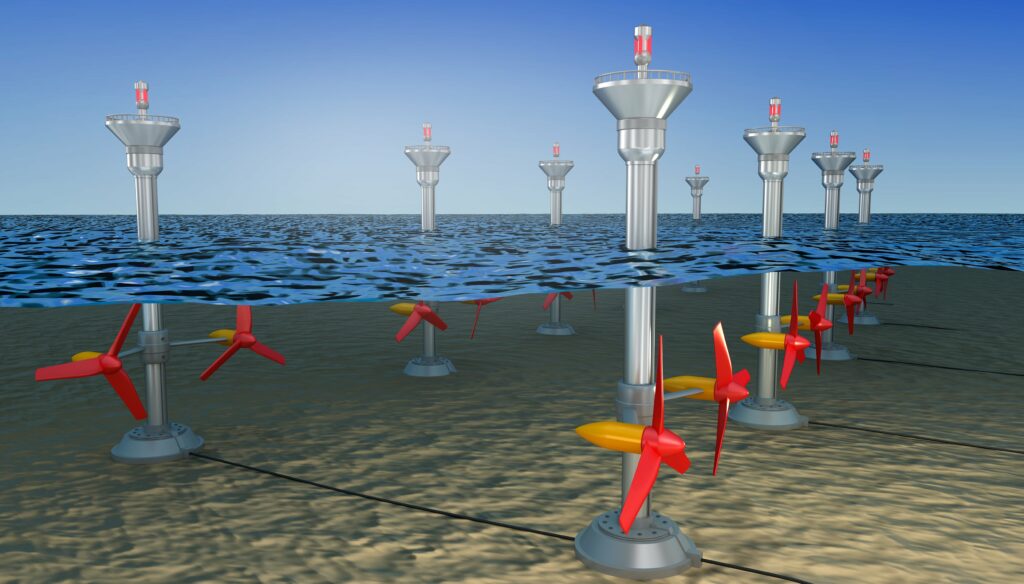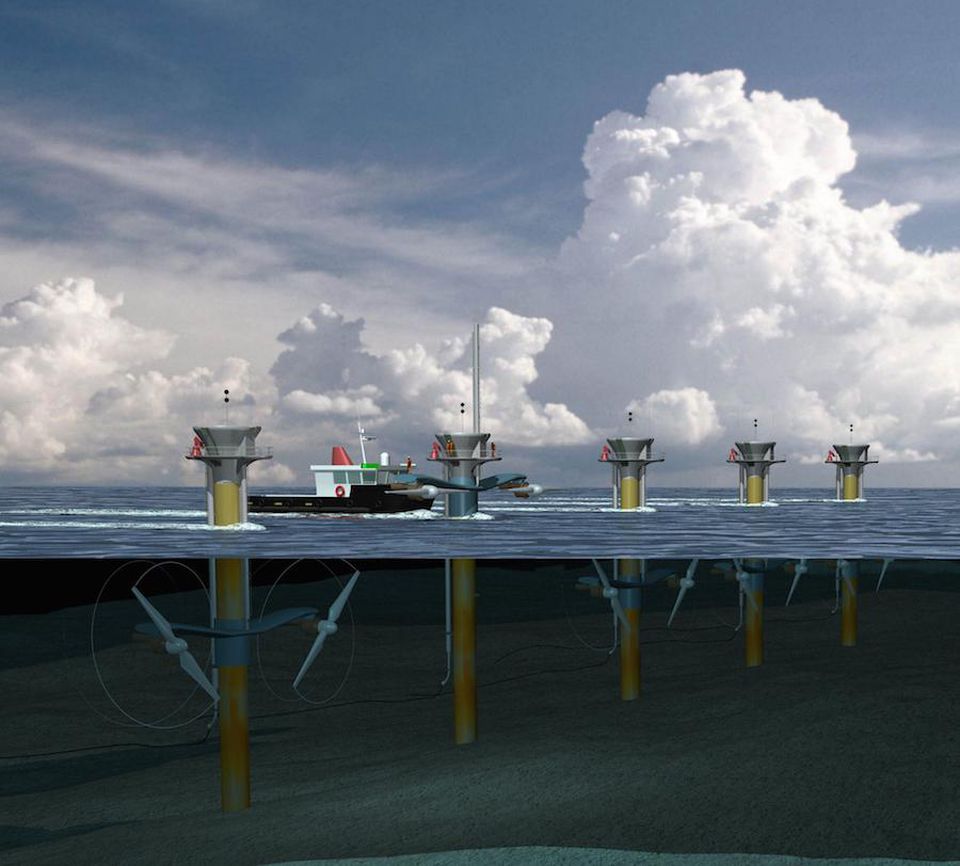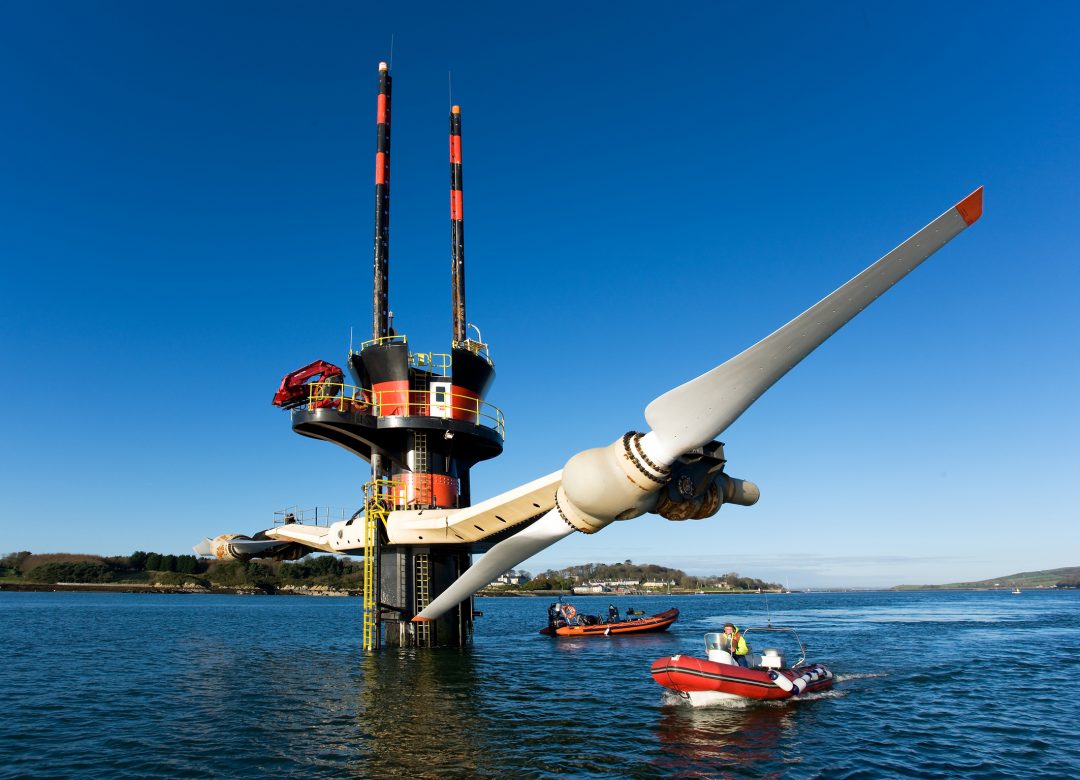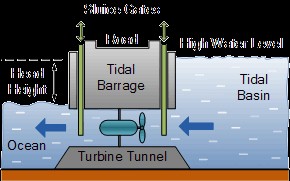When it comes to renewable energy resources, we often think of wind and solar energy. But what about tidal energy? Tidal energy is a form of hydropower that relies on rising and falling sea levels. Tidal energy is not commonly thought of when considering the types of renewable energy resources. In this article, we will give a thorough response to the question, “Is tidal energy renewable?” and discuss the advantages and disadvantages of tidal energy. Read this new blog in Linquip to find out more.
What Is Tidal Energy?
Tidal energy is a form of hydropower that converts the energy obtained from tides into useful forms of power, mainly electricity using various methods.
How Is Tidal Energy Produced?
Tidal energy can be captured in a variety of ways. Surface devices lay on the ocean surface and produce electricity through the movement of waves. Underwater devices consist of a vertical or horizontal turbine, similar to that of a wind turbine, which creates electricity as the tide moves through the turbine. Reservoirs collect water and electricity is created as the water moves out of the reservoir through turbines. Tidal energy is most efficient when the height, mass, and speed of the water are at their optimum level.
The different varieties of tidal technologies indicate how the electricity from tidal energy is harnessed. Tidal barrages are similar to dams in that once the reservoir is filled, the turbines spin to create electricity. Tidal turbines are individual turbines that are placed in an area with a strong tidal flow where electricity is created when the water moves through the turbine, and tidal fences are a line of tidal turbines.
Is Tidal Energy Renewable or Nonrenewable?
Tidal energy is the most reliable source of renewable energy because of the continuous change in tidal movements that occur twice a day from the moon’s gravitational force. Tidal energy runs 24 hours a day, 7 days a week, 365 days a year. Besides, It does not require any use of nonrenewable resources, such as oil, to power the technology. Therefore, it has zero emissions and is considered a clean and renewable source of energy.
Advantages of Tidal Energy
Tidal energy has some advantages which are as follows.
-
Renewable
Tidal energy is a renewable source of energy, which means the energy doesn’t deplete as it is used. So, as you are harnessing energy from the changing tides, you don’t decrease the amount of energy the tides can produce in the future. The gravitational pull from the sun and the moon, which controls the tides, won’t cease to exist anytime soon.
-
Zero carbon emissions
In addition to being a renewable energy source, tidal power stations do not emit greenhouse gasses during electricity generation. Because greenhouse gas emissions are one of the leading causes of climate change, finding zero-emission energy sources is more important than ever.
-
Predictable
Tidal currents are highly predictable. Low and high tides follow well-known cycles, making it easier to know when power will be produced throughout the day. It also makes it easy to know how much power will be produced by turbines, since the power of the tides and currents can be forecasted accurately.
-
High power output
Tidal power plants can produce high amounts of electricity. One of the main reasons for this is that water is so dense – almost 800 times denser than air. This means that a tidal turbine will produce substantially more energy than a wind turbine of the same size.
Plus, even when water is moving at low speeds, the density of water allows it to power a turbine. So, tidal turbines have the potential to produce large amounts of electricity even if the conditions of the water aren’t ideal.
Disadvantages of Tidal Energy
There are also some drawbacks to tidal energy that are mentioned below.
-
Limited installation sites
For a tidal power plant to be built, the potential installation site must meet very specific requirements. First, they need to be located on a coastline, which limits potential station sites to coastal states.
There are additional requirements a potential site must meet. For example, tidal power stations need to be built in places where the difference in height between high and low tide is significant enough to power turbines. This limits where the power stations can be installed, making it difficult for tidal power to be implemented widely.
-
Expensive
One of the biggest drawbacks to tidal power is the high upfront costs. Tidal energy turbines need to be much sturdier than wind turbines, because of the high density of water. The cost of constructing a tidal power generation plant varies depending on what type of technology they use.
Most of the tidal power plants that are currently in operation are made of tidal barrages, which are essentially low-walled dams. The construction of a tidal barrage is extremely expensive since a whole concrete structure – plus turbines – needs to be put in place.
The cost barrier is one of the main reasons why tidal power has been slow to be adopted.
-
Environmental Effects
Just because tidal energy is renewable doesn’t mean it is completely environmentally friendly. The construction of tidal energy power stations can have a substantial impact on the surrounding ecosystem.
Tidal turbines have the same issue that wind turbines face with birds, and marine life collisions. As turbines spin, fish and other sea life could swim into the blades leading to serious injury or death. Tidal turbines also create low-level noise beneath the surface of the water that negatively impacts marine mammals, like seals.
Tidal barrages have an even larger impact on the local environment. Not only do they cause the same problems that turbines do on their own, but they also have a similar impact that dams have. Tidal barrages prevent the migration of fish and cause flooding of surrounding areas that forever changes the landscape.
-
Energy Demand
While tidal power does have a predictable power generation, it doesn’t have constant power production. We can know exactly when the tidal power plant will generate electricity, but that electrical generation might not match up with the energy demand.
For example, if the high tide is at noon, the tidal electricity will be produced around noon. Peak energy demand is usually in the morning and the evenings, with the lowest energy demand in the middle of the day.
So, the tidal power plant will produce all of this electricity, but it won’t be needed. So, tidal power would need to be paired with battery storage to make the most out of the energy it produces.
Uses of Tidal Energy
Tidal energy has several applications which are as follows.
-
Tidal Electricity
Like other forms of energy, the main usage of tidal energy is in the generation of Electricity. Tidal energy is being used in Sihwa Lake Tidal Power Station, South Korea to generate 254 MW of tidal electricity at very low costs. There are other plants in operation in France, the United Kingdom, and Scotland as well.
-
Grain Mills
Tidal energy has been used for hundreds of years. Just like windmills, tidal energy was used for the mechanical crushing of grains in grain mills. The movement of turbines due to tidal energy was used in the crush Grains. However, with the advent of fossil fuels, the usage of tidal energy has become quite low.
-
Energy Storage
Tidal energy can also be used as a store of energy. Like many of the hydroelectric dams which can be used as large energy storage, tidal barrages with their reservoirs can be modified to store energy. Though this has not been tried out, with suitable modifications tidal energy can be stored as well though costs may prove to be high.
-
Provide Protection to Coast in High Storms
Tidal barrages can prevent damage to the coast during high storms and also provide an easy transport method between the two arms of a bay or an estuary on which it is built.
Tidal Energy Diagram
As mentioned earlier, tidal energy can be harnessed through different methods. A Tidal Barrage is a type of tidal power generation that involves the construction of a fairly low dam wall, known as a “barrage” and hence its name, across the entrance of a tidal inlet or basin creating a tidal reservoir. This dam has several underwater tunnels cut into its width allowing seawater to flow through them in a controllable way using “sluice gates”. Fixed within the tunnels are huge water turbine generators that spin as the water rushes past them generating tidal electricity.
Tidal barrages generate electricity using the difference in the vertical height between the incoming high tides and the outgoing low tides. As the tide ebbs and flows, seawater is allowed to flow in or out of the reservoir through a one-way underwater tunnel system. This flow of tidal water back and forth causes the water turbine generators located within the tunnels to rotate producing tidal energy with special generators used to produce electricity on both the incoming and the outgoing tides. The diagram of tidal energy generation through Barrages is shown below.
The Future of Tidal Energy
Tidal energy has huge potential, especially as new technologies, like dynamic tidal power, continue to be developed.
Currently, there are less than ten tidal power stations in operation globally. The two most popular tidal power plants, Rance Tidal Power Station and Sihwa Lake Tidal Power Station produce enough tidal energy to power 94,507 homes in the United States for an entire year. Not only is that a substantial amount of power, but also the power produced is also predictable, and carbon-free.
However, tidal power plants can have a substantial impact on the surrounding ecosystem, and high upfront costs, and there are limited suitable sites for them. Hopefully, as technology continues to improve, we will be able to take advantage of the energy stored within the tides.
So, now you know the answer to the question, “Is tidal energy renewable?”. If you enjoy this article in Linquip, let us know what you think by leaving a reply in the comment section. We will be more than glad to have your viewpoint on the article. Is there any question we can help you with? Feel free to sign up on our website where our experts are prepared to provide you with the most professional advice.
Buy Equipment or Ask for a Service
By using Linquip RFQ Service, you can expect to receive quotations from various suppliers across multiple industries and regions.
Click Here to Request a Quotation From Suppliers and Service Providers
Read More On Linquip






